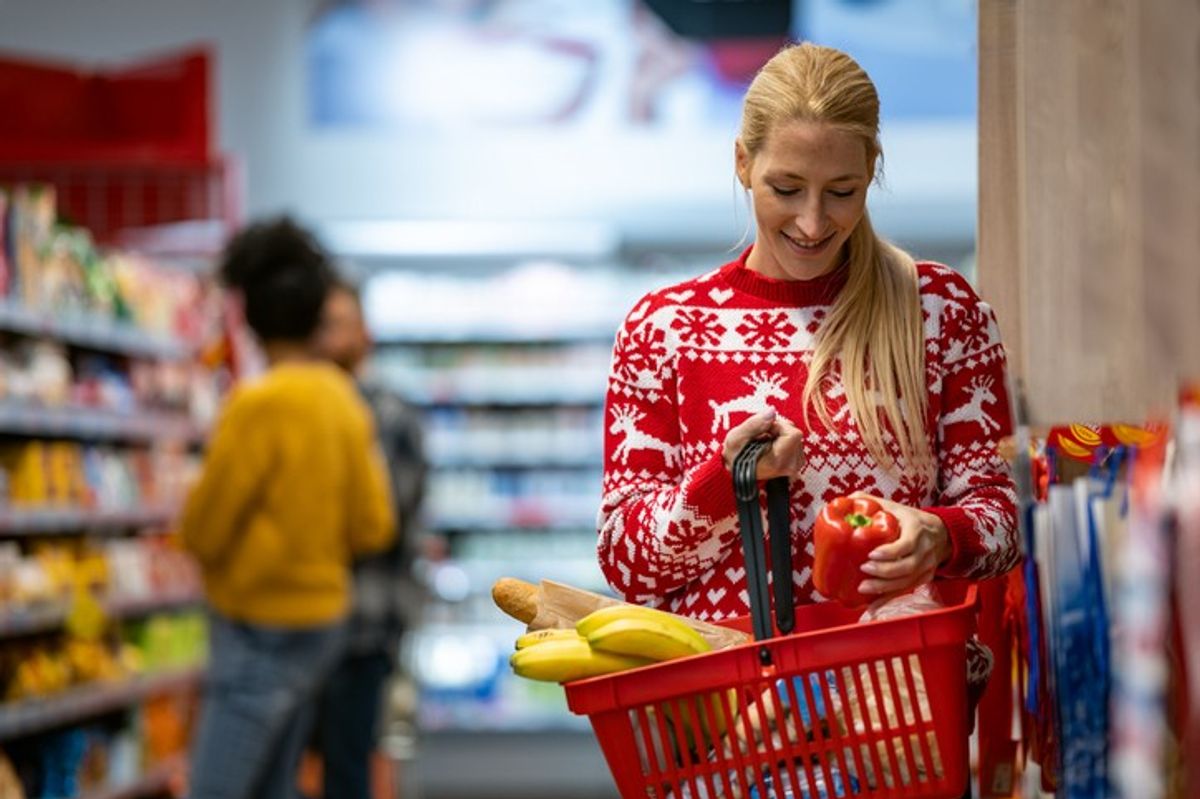Household spending on take-home groceries hit a record high this Christmas at £460 on average, according to the latest data from Kantar. Overall take-home sales at the grocers rose by 2.1 per cent over the four weeks to 29 December compared with last year.
Fraser McKevitt, head of retail and consumer insight at Kantar, says, “It was a solid Christmas at the supermarkets with sales surpassing £13 billion during the four weeks of December for the first time ever, showing people were clearly in the mood to celebrate and spend.
"However, despite the festive cheer, grocery price inflation has ticked up to 3.7 per cent, its highest level since March 2024.
“In contrast to reports of disappointing footfall across the rest of the high street, it was a very different story in the world of grocery. The average household made nearly 17 separate shopping trips this December, delivering the busiest month for the retailers since the pre-lockdown rush in March 2020.
"As anticipated, Monday 23 December was the most popular shopping day of the year, with sales a whopping 30 per cent higher than any other day during 2024.”
People were also willing to splash out that little bit more than usual, as sales growth for branded goods accelerated to 4.2 per cent, while premium own-label lines jumped by 14.6 per cent. The latter now account for a record 7.0 per cent of all sales, as nine in 10 households bought at least one of these products in December.
Sparkling wine and champagne were the stars of the festive drinks trolley, achieving sales growth of 4.4 per cent at a total of £187 million across the month. There was enjoyment in moderation too, as 11 per cent of the population bought a no or low alcohol drink, up from under 10% last year.
The category data reveals some interesting splits between how younger and older shoppers prefer to indulge.
McKevitt adds, “We’ve all got our own festive favourites, but it seems that age differences come into play too. Under 45s are far more likely to pick up a sausage roll, and they also go for a slightly more mediterranean spin, being the most likely to reach for panettone as well as antipasti and party food as part of their Christmas shopping.
"Meanwhile over 45s account for the majority of Christmas cake and fortified wine sales. The seasonal biscuit, however, knows no bounds appealing across the generations.”
Britain's largest grocer Tesco saw growth across its convenience, superstore and online channels contributing to a 5.0 per cent increase in sales over the 12 weeks to 29 December.
Sainsbury’s achieved its highest share since December 2019 at 16.0 per cent thanks to sales growth which outpaced the market at 3.5 per cent. Morrisons sales rose by 0.4 per cent with its share standing at 8.6 per cent. Asda now holds 12.5 per cent of the market.
McKevitt adds, “More people chose to do some of their Christmas grocery shopping online this year with 5.6 million households opting for delivery or click and collect services on at least one occasion. Online spending for the month reached a record £1.6 billion. This saw Ocado boost its sales by 9.6 per cent over the 12 weeks, taking its overall share to 1.8 per cent.”
Discount retailers Lidl and Aldi achieved their highest ever Christmas shares at 7.3 per cent and 10.0 per cent respectively. Lidl secured the fastest footfall growth of any retailer as spending through its tills increased by 6.6 per cent. Aldi’s sales were up 2.9 per cent, as it attracted an additional 315,000 customers to its stores.
Waitrose market share remained at 4.6 per cent with spending increasing by 2.1 per cent. Iceland’s sales rose by 1.0 per cent giving the frozen food specialist a 2.3 per cent share. Convenience retailer Co-op’s portion of the market is now 5.3 per cent.
Share of symbols and independents saw a slight dip and is at 1.3 per cent.
Outside of the grocers, food and drink spending at M&S increased by 8.7 per cent, driven by strong performance in its core fresh and chilled range (9 per cent higher) and ambient lines (11 per cent greater) across the 12 weeks.





